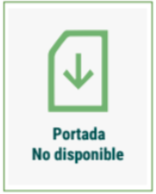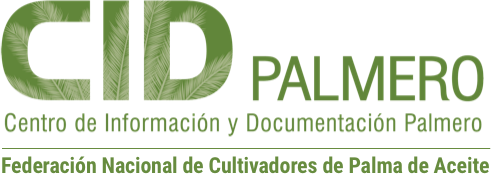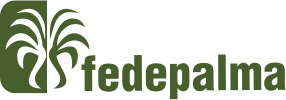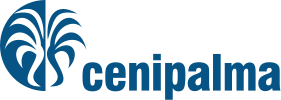Lethal Wilt Control Costs in Colombian Oil Palm Plantations Located at Bajo Upia Region

Author
Ruiz Á., Elizabeth
Tovar, Juan P.
Ospina, Carlos A.
Rojas, Lina F.
Hernández, Diego A.
Rosero, Gustavo
Hernández, Marta L.
Rubiano, Miguel
Suesca, Freddy
Verdugo, José A.
Mosquera Montoya, Mauricio
Estadisticas
Publicación:
Revista Palmas; Vol. 41 Núm. 3 (2020); 38-52
0121-2923
Revista Palmas; Vol. 41 Núm. 3 (2020); 38-52
0121-2923
Abstract
The lethal wilt (LW) is the most limiting disease for oil palm crops in the Colombian Eastern Plains. A recent esti- mation on the loss caused by the LW on the Colombian oil palm agroindustry, yielded a value of USD 154 million (Sispa-Cenipalma, 2019). This paper presents the results of a research study undertaken in order to estimate the costs related to the implementation of the LW control principles in five plantations located at the Bajo Upia region (Eastern Plains). It must be highlighted that the LW control principles were developed among oil palm plantation managers and researchers from the Colombian oil palm research center, Cenipalma. From a methodological standpoint, it was structured a questionnaire in order to gather data on activities required to perform the control strategy, along the lines of the LW control principles. Specifically, these activities are: scouting for LW cases, elimination of diseased palms with LW and application of pesticides. The data asked at each of these activities correspond to labor required, labor yield, wages, inputs, tools and machinery. Results indicate that activities that have the greater share on the total costs are: scouting for LW cases which ranges from $40.000/ha to $120.000/ha per year, depending mostly upon frequency and; application of pesticides which ranges from $23.000/ha y $90.000/ha per year, depend- ing mostly upon frequency, as well. Regarding the annual total cost per hectare results indicate that it oscillates between $40.000 y $220.000, and plantations reporting higher LW incidence. La Marchitez letal (ML) es la enfermedad más limitante para los cultivos de palma de aceite en las llanuras orientales colombianas. Una estimación reciente sobre la pérdida causada por la ML en esta agroindustria dio un valor de 154 millones de dólares (Sispa-Cenipalma, 2019). Este documento presenta los resultados de un estudio de investigación realizado con el fin de estimar los costos relacionados con la implementación de los principios de control de ML en cinco plantaciones ubicadas en la región de Bajo Upía (Llanos Orientales). Cabe destacar que estos principios se desarrollaron entre los administradores de plantaciones de palma de aceite e investigadores de la Corporación Centro de Investigación en Palma de Aceite (Cenipalma). Desde un punto de vista metodológico, se estructuró un cuestionario con el fin de recopilar datos sobre las actividades necesarias para llevar a cabo la estrategia de control, en la línea de los principios de control de ML. Específicamente, estas actividades fueron: búsqueda de casos de ML, eliminación de palmas enfermas con ML y aplicación de pesticidas. Los datos solicitados en cada una de estas actividades correspondieron a mano de obra requerida, rendimiento de la labor, salarios, insumos, herramientas y maquinaria. Los resultados indicaron que las actividades que tenían la mayor participación en los costos totales eran la búsqueda de casos de ML que osciló entre $ 40.000/ha a $ 120.000/ha, dependiendo principalmente de la frecuencia; y la aplicación de pesticidas con rangos de costos entre $ 23.000/ha y $ 90.000/ha, dependiendo de la frecuencia también. En cuanto al costo total anual por hectárea, estos oscilaron entre $ 40.000 y $ 220.000, los mayores valores representan plantaciones en donde hubo una mayor incidencia.
The lethal wilt (LW) is the most limiting disease for oil palm crops in the Colombian Eastern Plains. A recent esti- mation on the loss caused by the LW on the Colombian oil palm agroindustry, yielded a value of USD 154 million (Sispa-Cenipalma, 2019). This paper presents the results of a research study undertaken in order to estimate the costs related to the implementation of the LW control principles in five plantations located at the Bajo Upia region (Eastern Plains). It must be highlighted that the LW control principles were developed among oil palm plantation managers and researchers from the Colombian oil palm research center, Cenipalma. From a methodological standpoint, it was structured a questionnaire in order to gather data on activities required to perform the control strategy, along the lines of the LW control principles. Specifically, these activities are: scouting for LW cases, elimination of diseased palms with LW and application of pesticides. The data asked at each of these activities correspond to labor required, labor yield, wages, inputs, tools and machinery. Results indicate that activities that have the greater share on the total costs are: scouting for LW cases which ranges from $40.000/ha to $120.000/ha per year, depending mostly upon frequency and; application of pesticides which ranges from $23.000/ha y $90.000/ha per year, depend- ing mostly upon frequency, as well. Regarding the annual total cost per hectare results indicate that it oscillates between $40.000 y $220.000, and plantations reporting higher LW incidence.
Palabras clave:
Letal wilt control basic principle
E. guineensis
disease control
costs assessment
principios básicos de manejo de ML
E. guineensis
control de enfermedades
evaluación de costos
Letal wilt control basic principle
E. guineensis
disease control
costs assessment
principios básicos de manejo de ML
E. guineensis
control de enfermedades
evaluación de costos
Related items
Showing items related by title, author, creator and subject.
-
Armillaria spp., Hevea root rot in Central Africa : The case of Gabon.
Guyot, J. 42519, autor. aut -
Cocoa disease and pest control.
Nguyen, Ban J., autor. aut 56716


